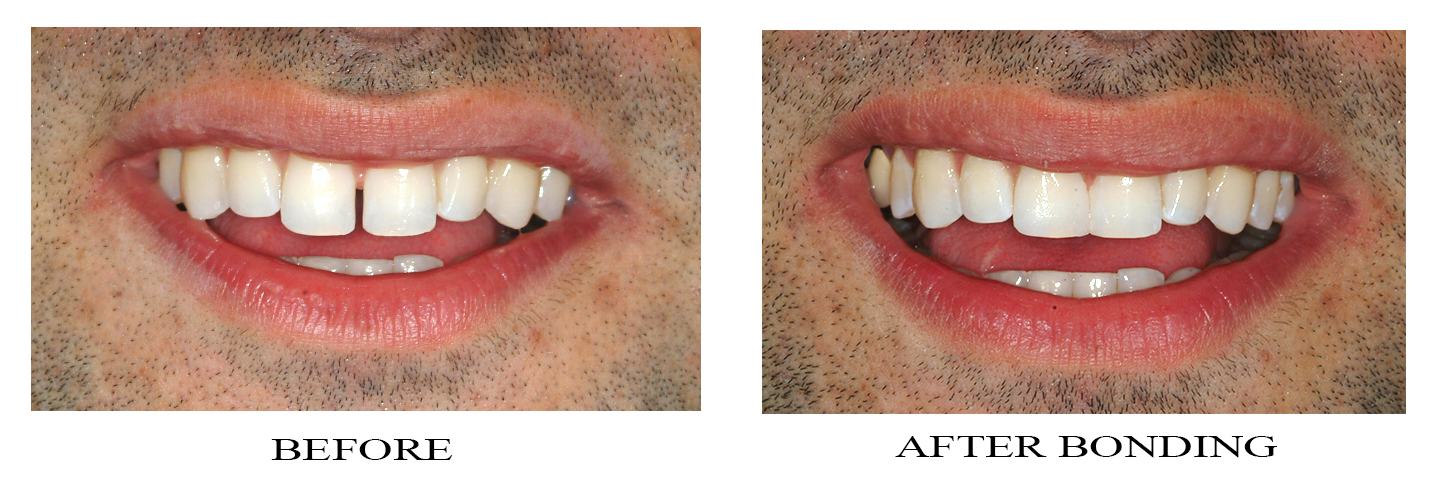What Is Gap Dental Bonding? Fix Smile Gaps

The desire for a perfect smile is universal, and one common issue that can detract from an otherwise beautiful smile is gaps between teeth. These gaps, also known as diastemas, can occur for various reasons, including genetics, gum disease, or habits such as tongue thrusting. Fortunately, there are several dental procedures that can effectively address this issue, and one of the most popular and minimally invasive options is dental bonding, particularly gap dental bonding.
Gap dental bonding is a cosmetic dentistry procedure that involves the application of a tooth-colored resin material to the teeth, with the primary goal of closing the gap between them. This procedure is not only aesthetically pleasing but also quick, usually requiring only one visit to the dentist. The process begins with a consultation where the dentist assesses the size and location of the gap, discusses the desired outcome with the patient, and explains the procedure in detail.
The actual bonding process starts with the preparation of the teeth. The dentist will slightly roughen the surface of the teeth on either side of the gap to create a better bond between the tooth and the resin. After preparing the teeth, the dentist applies a conditioning liquid to help the bonding material adhere. The next step involves applying the tooth-colored resin, which is molded and shaped to fill the gap perfectly. Once the resin is applied and shaped, the dentist uses a special light to harden it. The final steps involve polishing the bonded area so that it matches the shine and color of the surrounding teeth.
One of the significant advantages of gap dental bonding is its conservative nature. Unlike veneers or crowns, bonding does not require the removal of significant amounts of tooth enamel. This makes it an excellent option for patients who are looking to improve the appearance of their smile without undergoing extensive dental work. Additionally, the procedure is relatively quick, can be completed in under an hour for minor gaps, and is generally painless, often not requiring any anesthesia.
However, like any dental procedure, gap dental bonding has its limitations and potential drawbacks. The material used for bonding is not as durable as the tooth enamel and can stain or chip over time. Patients who grind or clench their teeth, smoke, or consume a lot of coffee or tea may find that their bonding does not last as long as they would like. Regular dental check-ups are crucial to monitor the condition of the bonded teeth and address any issues promptly.
Despite these considerations, gap dental bonding remains a highly effective and popular solution for closing smile gaps. It offers an immediate aesthetic improvement, is less expensive than other cosmetic dentistry options like veneers, and can significantly boost a person’s confidence in their smile. For individuals considering this procedure, it’s essential to consult with a qualified and experienced dentist who can provide personalized advice and ensure the best possible results.
In conclusion, gap dental bonding is a straightforward, effective, and minimally invasive way to address smile gaps. With its ability to provide immediate results, conservative approach, and aesthetic appeal, it’s no wonder why this procedure is gaining popularity among those seeking to perfect their smile. As with any dental treatment, regular maintenance and good oral hygiene practices are key to ensuring the longevity and success of the bonding.
Frequently Asked Questions
What is the average cost of gap dental bonding?
+The cost of gap dental bonding can vary widely depending on the location, the dentist's expertise, and the complexity of the procedure. On average, the cost can range from a few hundred to several thousand dollars per tooth.
Is dental bonding suitable for all types of smile gaps?
+No, dental bonding might not be the best option for very large gaps or for gaps caused by severe misalignment or other underlying dental issues. In such cases, other treatments like veneers, crowns, or orthodontic work might be recommended.
How long does dental bonding last?
+The longevity of dental bonding can vary but typically lasts between 3 to 10 years, depending on the patient's oral habits, the quality of the bonding material, and the skill of the dentist.
Can dental bonding be used for other cosmetic issues besides gaps?
+Yes, dental bonding is versatile and can be used to address a variety of cosmetic dental issues, including chips, cracks, and discoloration of teeth, making it a popular choice for cosmetic dentistry procedures.
In the realm of cosmetic dentistry, gap dental bonding stands out as a simple yet effective solution for enhancing one’s smile. By understanding the procedure, its benefits, and its limitations, individuals can make informed decisions about their dental health and aesthetic goals. Whether you’re looking to correct minor imperfections or seeking a more significant transformation, consulting with a professional can pave the way to achieving the confident, beautiful smile you’ve always desired.

